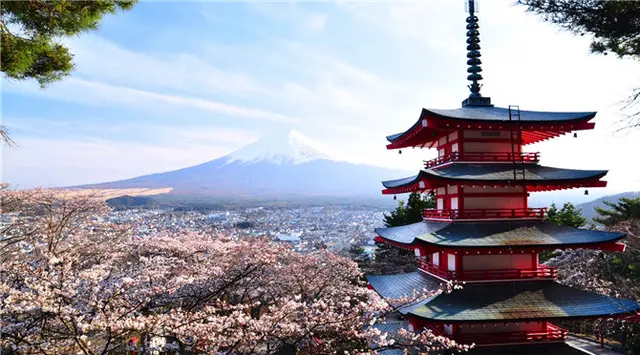Prime Minister Shinzo Abe's cabinet on Thursday approved a record budget for fiscal 2016 which will rely on robust corporate profits and interest payments to tackle the nation's burgeoning welfare costs and mounting public debt.
The year beginning April 2016 will see a record-high 96.72 trillion yen (799 billion U.S. dollars) earmarked for government spending, with allocations made specifically to tackle the nation' s demographic crisis, as society here is rapidly aging but the population also shrinking, as well as allocations to boost regional economies and defense spending.
The draft budget will be submitted to a Diet session on Jan. 4 and is slated to be enacted by the end of March.
Taxes and other revenues collected by the government will cover the majority of the state's spending plans, with tax revenue alone predicted to leap to 57.6 trillion yen, a 25-year high, according to government estimates, which also envision a real economic expansion of 1.7 percent.
But the government's growth forecast, which translates to a nominal 3.1 percent, overshoots the Bank of Japan's already optimistic outlook for the economy here, as well as those of leading economists, which leaves the possibility open that the government's lofty revenue expectations may fall short.
The record tax revenues will, in theory however, allow the government to cut its issuance of new bonds by around 2.4 trillion yen compared to the previous fiscal year's budget, to 34.43 trillion yen, bringing the debt to revenue ratio down by more than 35 percent to a 9-year low.
The government, which uses debt for financing more than other developed economies, however, is still burdened with arrears that continue to stand as the highest in the industrialized world at more than twice the size of Japan's economy. It has said, however, that it remains committed to having its fiscal house in order by fiscal year 2020, when it has pledged to turn the primary balance deficit into a surplus.
Some economists have warned however that if the government looks unable to reverse its primary deficit, it will be forced to issue new bonds, or risk being unable to finance its annual budget.
In addition, the government is also counting on oil prices remaining relatively low throughout the fiscal year, despite ongoing turmoil in the Middle East, as Japan, a resource-poor nation with most of its nuclear plants still shuttered following the 2011 Fukushima crisis, imports most of its oil.
Finance Minister Taro Aso has said that the government achieving its reform goals will be a challenging task, but that the government would forge ahead with its ambitious plans, with an eye on achieving Abe's target of increasing Japan's GDP to 600 trillion yen by 2020.
Currently gross domestic product stands at around 500 trillion yen, meaning that for the government to hit Abe's target, GDP will have to expand at more than 3 percent on a nominal basis.
Achieving fiscal reform "will not be easy" but the budget "surely complies" with the government's reform plan and ongoing efforts to cut spending," Aso told a news conference following the cabinet green-lighting the budget.
"Eventually, we were able to rein in the public burden as the expenditure in the general-account budget remained within the benchmark set by the economic and fiscal revival plan," Aso said.
The budget will also allocate 31.97 trillion yen for social security expenses, which is a 1.4 percent jump from the previous budget, as the government intends to make more provisions for childcare and nursing care facilities, as society here continues to age, requiring more nursing homes and specialists to work there.
The allocation also covers the government's drive to coax qualified care providers who have become homemakers, or have otherwise stopped working, back to work.
Defense expenses have also been hiked by 1.5 percent to 5.05 trillion yen, marking the fourth successive annual increase and Japan's ODA spending will also increase by 1.8 percent to 551.9 billion yen.
The budget will also aim to boost tourism as means to stimulate the economy, including in rural areas, with the Japan Tourism Agency's allocation being doubled to 20 billion yen, with a target of attracting 30 million tourists here a year.
Spending on public works projects will be increased to just under 6 trillion yen, with restoration rather than new construction projects being the focus.
The budget was compiled with some concessions being made to supporters of the ruling Liberal Democratic Party (LDP), ahead of the 2016 upper house elections, sources close to the matter said Thursday, with funding for Okinawa, burdened with hosting the majority of U.S. forces in Japan, only increased moderately, while medical fees will be raised by almost half a percent, following requests to the prime minister from doctors and medical-related lobbies.
 简体中文
简体中文

